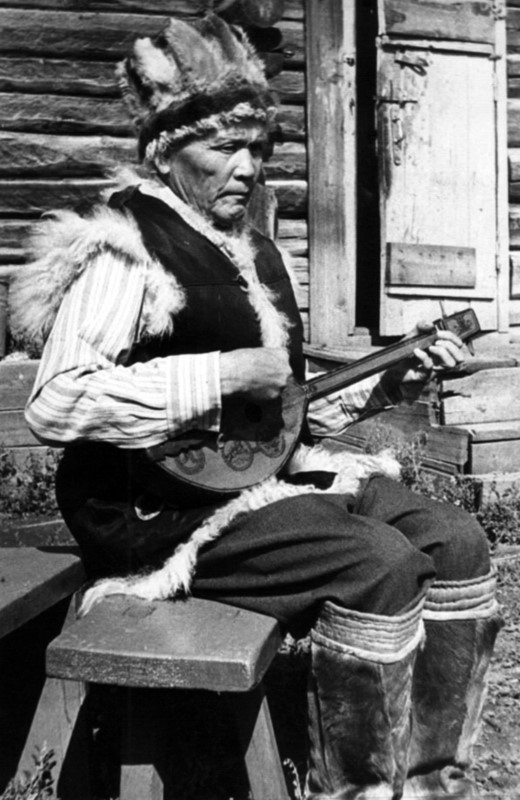|
|
Institute of Ethnology and Anthropology, Russian Academy of Sciences,
Svetlana Tyukhteneva
|
The Telengits. Modern Culture and Crafts, Folklore Groups, Professional Art
The Telengits have an extensive oral folklore culture, in which songs, myths, legends and smaller folklore genres play a crucial role. Heroic epic stories are especially popular. The most famous kaichy (storyteller) is Alexey Kalkin (1925-1998). Over the years, more than 15 epic poems were recorded from the narrator and published in the Altai language, preserving the specifics of the Telengit dialect.

His tradition lives on in the young performers, adding modern musical styles to the old throat singing techniques. Among the current Telengit music ensembles, the most famous are “Altai Kai” with Urmat Yntaev, “Tala” with Eles Tadykin and “Ar Bashkush.”

The Telengit epic (long narrative poems,) performed in kai throat singing, is known and studied thanks to Alexey Kalkin. The structural unit of the musical and poetic composition of epic is the tirade, which consists of a melody played on the topshuur, a type of a two-string lute. The vocalization falls on asemantic syllables performed through a special “tuning” of the singing apparatus involving compression in the larynx at the level of the vestibular folds, movements of the lips and tongue, tension of the resonators, all resulting in a noise formant that becomes a whistling, melodic recitative overtone, based on isomorphic eight-syllable poetic lines. The Telengits have preserved the tradition of cattle spells emizer, jepun jam, saagan, the purpose of which was to preserve the offspring during calving, foaling, etc. The spells placed upon the specific types of animals (sheep, goat, cow, yak, horse, camel), for example, koy jeepun jam (“the sheep abandoned the baby”) is chanted to a special tune and is not intended to be heard by outsiders. The spells use words with a symbolic magical function. The Telengit fairy-tale folktunes are close to lullabies and cattle spells. Among the Kosh-Agach Telengits, a trace of the ritual tabyr songs, widespread in the past and associated with spring- autumn seasonal rituals, can be heard in game songs. The Telengit musical instruments are topshuur, ikili, shoor, komus. There are also wind instruments: amyrgy, a hunter-whistle for deer, sygyrtkysh, a willow hunter-whistle for chipmunk, ediski, a hunter-whistle for roe deer, konko, a bell hung on the neck of a horse or a cow, kuzyпgi, a small bell for goats or sheep, a shepherd's staff-rattle kyngyruush or kyrkyrush, shaltrak, a children's toy in the form of a wooden hook for the cradle with rattles made of lamb bones that are hung on leather straps.
Professional Telengit artists include singers, theater actors, and philharmonic dancers. The republican holidays and competitions popularized the theater troupe “Toskyynak,” the folk ensemble "Tele" from the Ulagansky district, as well as the comedic mini-theater “Oymok” from the Kosh-Agachsky district.
























































